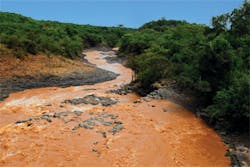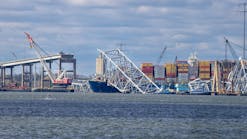Silt Fence and Wattles Stay the Course – Part 1
Classic performers in any field remain popular because they serve a purpose and they execute it well. Take, for example, sediment control. While many materials used for this objective on project sites around the globe have become more environmentally sensitive and more effective regarding their intended purpose in recent years, it is the products’ function onsite and their ability to meet increasing environmental standards that ultimately determines their use. The reasons silt fencing and wattles remain viable with the industry, however, are clear: affordability and versatility.
Whether the site is rural or commercial, residential or industrial, the following examples explore a variety of products and their functions in overcoming challenges that support the use of silt fencing and wattle protection, used independently or in combination with other erosion control measures, in providing lasting, reasonably priced sediment control.
Steep Housing
With a growing need for more student housing, McComas-Lacina Construction, based in Iowa City, was contracted to build new dorm space for students at the University of Iowa in Iowa City in June 2012.
Existing buildings and structures surrounded the site where sediment loss was a concern because of its approximately 3:1 slope. McComas-Lacina workers used more than 990 linear feet of Grimes, IA–based Soil Tek’s e-tube wattles. The product’s flexibility allowed it to protect the soil as it wrapped around structures at the 1.5-acre site where a 14-story dorm will be located. The biodegradable e-tube is filled with a blend of compost and mulch. Water filters through it, while sediment is trapped before it’s lost. The product’s durability was tested during a recent rainstorm that produced three-quarters of an inch of rain per hour, with zero site loss, notes Mike Youngman, Soil-Tek’s project manager for eastern Iowa.
Mobility also was a concern at the site, where there are many different contractors located within a single confined space. The e-tubes can be moved and then “put back in place before they leave the site and before another rainfall,” says Youngman. The e-tubes will remain onsite throughout the project. Even with the necessity of mobility onsite, most of the e-tubes are expected to last through the duration of the project, with an anticipated completion in 2015.
“We expect to put an additional 200 linear feet out there over the next two years,” adds Youngman.
Seeding and matting were also included in the approximately $55,000 to $60,000 erosion control budget.
Pipeline projects are another type of environmentally sensitive undertaking for many reasons. Using natural solutions is crucial, as is protecting sediment loss in wooded, mountainous regions.
Mountain Pipeline
In May 2012, Sheehan Pipe Line Construction Co. was contracted to work on a pipeline project in Mountainsville, WV, for Chesapeake Energy. The company built the right of way for a mainline gathering system deep in the Appalachian Mountains.
Larry McVay of Tulsa-based Sheehan says the terrain was very rugged. “Seventy-five percent of the project has steep slopes. It was virgin timber.
“This wasn’t an existing right of way,” he adds. “We had to remove all the trees and start from scratch, more or less.” Most of the trees are maple and hardwoods.
Workers used Conyers, GA–based Silt-Saver BSRF Priority 1 Silt Fence and Priority 2 Silt Fence. Both are 36 inches wide and both are made of nonwoven, spun-bond, polyester fabric attached to wooden stakes. “The gas company, a lot of times, will put it in their specs that we use Silt-Saver,” explains McVay, who adds that this silt fencing was selected for the Mountainsville site because of its quality, low maintenance, and the company’s service.
Red clay, he says, makes up 90% of the soil at the site. “We use small trenchers to cut a small ditch, and then we install the silt fence and boost the dirt against the silt fence,” he says, adding the approximately 20,000 feet of fencing was largely used around the perimeter of the site, though it was also positioned on some steeper-sloped areas.
The fencing was used in combination with a compost-filled wattle from Filtrexx International LLC. “We use the FilterSoxx anytime there’s a drainage with a heavy rain at the bottom of any hill or mountain,” notes McVay.
Daily monitoring is ongoing at the site. This phase of the ongoing project is expected to be completed this fall. Timing was essential for the erosion control and revegetation aspects of this project as workers aimed to establish a strong root base for plants at the site before winter. Pasture and woodland mixes of grass seed were applied. While there was no written requirement that native seed was to be used, explains McVay, “that’s what we normally do to whatever is native to the areas.”






